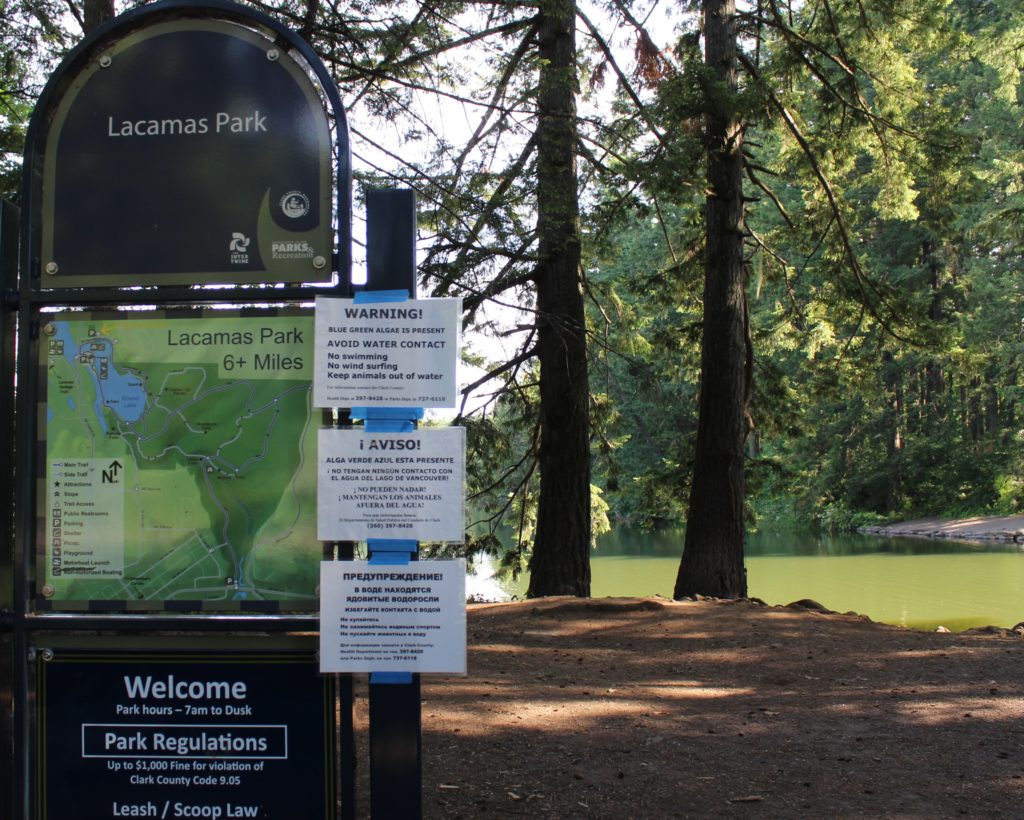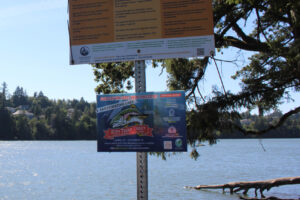Clark County Public Health has upgraded its toxic blue-green algae advisory at Round Lake in Camas after test results revealed elevated levels of cyanotoxins in the water.
In a press release, the county states that results continue to show elevated levels of toxins in the water at Lacamas Lake, so the warning advisory at that lake will remain in place.
Public Health is advising people to avoid direct contact with all water in both Lacamas and Round Lake.
Results from water samples taken from Lacamas and Round lakes on Monday, June 22, revealed cyanotoxins above the threshold levels recommended by the Washington Department of Health. The caution signs at Round Lake are being replaced with warning signs.
Cyanotoxins can be harmful to people, especially young children, and deadly for small pets that drink the water. Health officials recommend:





